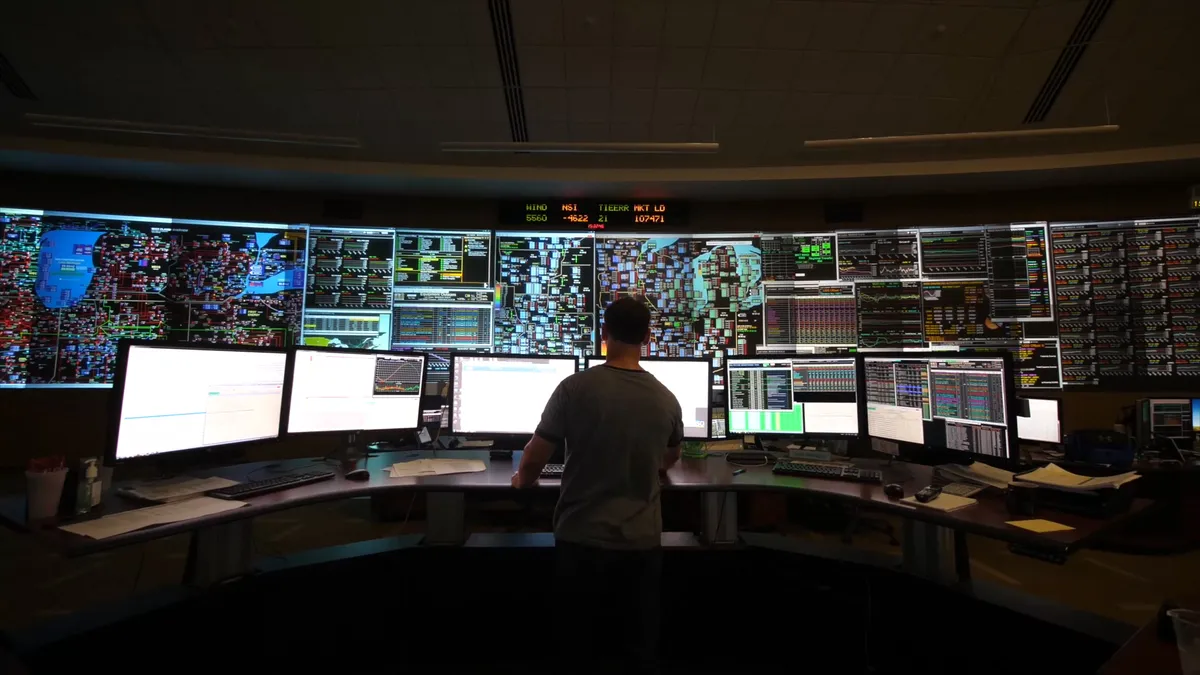American offshore wind is on the verge of making history.
Before the end of next year, construction will start on the first two ocean wind projects in the United States.
There are about 7 GW of offshore wind installed globally, most in Europe, and 6.6 GW more are in construction, according to the Offshore Wind Market and Economic Analysis report from the Department of Energy and Navigant Consulting.
But none of the 14 U.S. projects in advanced stages of development, representing 4.9 GW of wind power, have started construction to date.
“This is the year it happens,” Deepwater Wind CEO Jeff Grybowski said at the recent American Wind Energy Association (AWEA) offshore wind conference.
“We are nine months away from the installation of our first foundations,” Grybowski said of Deepwater’s fully permitted and approved five turbine, 30 MW Block Island Wind Farm off Rhode Island.
Cape Wind
Cape Wind is also scheduled to sink steel into Nantucket Sound waters late next year.
At 468 MW, it will be the first U.S. utility-scale offshore project, but it will build on the experience of 64 such projects already in service in Europe, including the 630 MW London Array.
“We are on track and expect to close financing by the end of this calendar year,” Cape Wind Communications Director Mark Rodgers said. Led by the Bank of Tokyo Mitsubishi, along with Rabobank of Holland and French investment bank Natixis, Cape Wind is looking to add debt and equity funding to the $1.5 billion it has already secured.
Siemens will supply the turbines. The build out of the Massachusetts port of New Bedford will also be done by the end of this year. It is, Rodgers said, “the first port facility in North America specifically designed for staging and assembly of offshore wind turbines.”
Rodgers’ confidence about financing comes from the project’s power purchase agreements with National Grid and NSTAR, Massachusetts’ dominant utilities. “That is the driver for our financing,” he said.
The PPAs cover 77.5% of the project’s output and make it almost certain that at least 101 of the planned 130 turbines will go into construction next year.
Though the project’s opponents, funded by billionaire William Koch, may create new legal hurdles, “weak appeals of 26 solid legal decisions on the side of the project and the agencies that reviewed it are no longer going to impact our ability to finance or build,” Rodgers said.
“When physical construction begins, it will be a game changer for this industry,” Rodgers added. “The benefits will be self-evident.”
Utilities in offshore wind
Dominion Virginia Power, the first U.S utility to get into offshore wind, is moving ahead with its Department of Energy-backed Virginia Offshore Wind Technology Advancement Project (VOWTAP). Slated for construction 24 miles off Virginia Beach, the two 6-MW Alstom turbine installation is being carefully planned.
“We need to complete our engineering design and procurement process, receive regulatory approvals and complete construction to achieve the 2017 commercial operation date,” said Dominion Virginia spokesperson David Botkins.
The U.S. utility industry should be paying attention. Utilities were among European offshore wind’s early equity investors, reported Jerome Guillet, Managing Director of Parisian investment bank Green Giraffe Energy, during one of the AWEA conference sessions. Like Dominion, European utilities typically were engaged from early development.
European utilities like RWE, Dong, and SSE kept the first projects on their balance sheets. Now utility consortia are signing on for the build out of large North Sea and Atlantic Ocean development zones.
Many U.S. utilities and other investors have been skeptical of offshore projects because of high costs. Block Island’s first year output will sell at $0.244 per kilowatt-hour, according to Deepwater spokesperson Meaghan Wims. Cape Wind’s 2014 price is $0.199 per kilowatt-hour. Both projects’ contracts have annual escalators.
Offshore wind economics
Commercial success depends on more than just a low levelized cost of energy, according to DOE Wind & Water Technologies Sr. Advisor Gary Norton.
Offshore wind provides other benefits:
- It suppresses electricity market prices because its marginal generating cost is effectively zero
- It eases transmission congestion because it can be near major load centers
- It’s coincidence with load peaks gives it a high capacity value
- It offers fuel diversity
- It makes compliance with renewables mandates possible for densely populated states with few other renewable resources
- Jobs and economic growth come with local development
- It provides energy security where high electricity prices and high demand threaten the availability of conventional sources
“A robust offshore wind supply might have prevented the sharp power price spikes during last winter’s polar vortex by using the frigid winds to shave peak period demand for natural gas,” AWEA offshore wind policy manager Chris Long pointed out.
Such economic benefits could be considerable. There are 54 GW of U.S. offshore wind potential available for development even after ocean areas where there could be environmental concerns or interferences to military, shipping, or commercial activities are excluded, according to the DOE/ABB National Offshore Wind Energy Grid Interconnection Study (NOWEGIS). Integrating that potential into the U.S. grid could save the economy $7.68 billion per year, or $0.041 per kilowatt-hour, in electricity costs.
Coming innovations
DOE will continue to lead cost-cutting with efforts like its new atmosphere to electrons (A2E) initiative focusing on whole plant costs, Norton reported. But “there is no silver bullet. Cost reduction will come from an industry-wide effort on all fronts.”
Economies of scale will come from learning curve effects, volume production, supply chain maturity, operational experience, and increasing turbine and project size.
Reduced risk that will lead to a lower cost for capital will come from regulatory support, proven structural integrity, reliable construction and installation practices, and the development of a track record with the marketplace.
Costs can be cut through turbine optimization, advanced substructures, floating platforms, array optimization and grid integration innovations.
But no innovation in U.S. offshore wind is more highly anticipated than the DOE-backed Principle Power Inc-Deepwater Wind WindFloat Pacific project. It will literally float up to five 6-MW turbines in 350 meter-deep water 18 miles off Oregon’s coast.
As unlikely as a giant floating wind turbine might seem, PPI’s technology is proven. A prototype 2-MW floating turbine has operated off Portugal’s coast since 2011 and generated over 11 gigawatt-hours of electricity. The company is backed by multinational utility EDP and oil and gas major Repsol.
At scale, floating deep water technology is expected to dramatically reduce costs of construction and maintenance. It is considered the only practical solution for developing wind off the U.S. Pacific coast. Unlike the long broad Atlantic continental shelf, the Pacific shoreline drops away too steeply for ocean floor-mounted turbines.
Execution of the project will begin sometime after the middle of 2015, according to PPI CEO Alla Weinstein.












